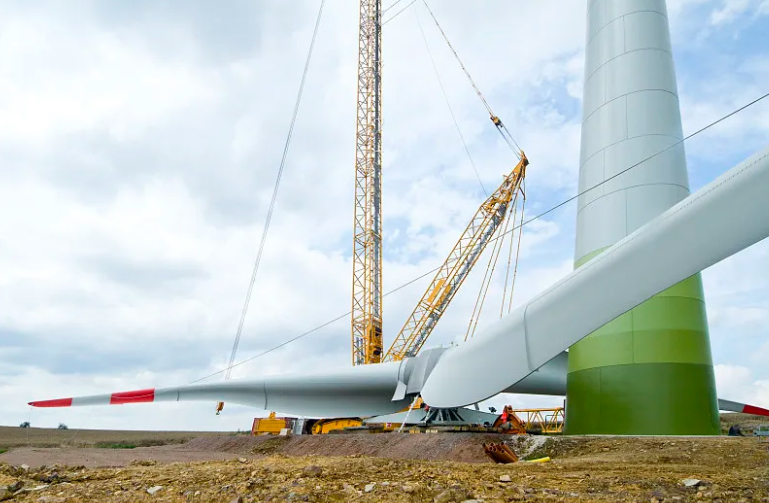New ideas for the reuse of wind blade materials
 Nov 06, 2023|
Nov 06, 2023| View:329
View:329Recently, Hou Xianglin and Deng Tiansheng, researchers of Shanxi Institute of Coal Chemistry, Chinese Academy of Sciences, have spent years of painstaking research and mastered the technology of "disassembling" the main material of fan blades - carbon fiber reinforced thermosetting resin composites (thermosetting resindirectional degradation and resource utilization technology), turning the "ultimate material" into a treasure and realizing the recycling of solid waste of fan blades, Completed the last link of green and low-carbon circular development in the wind power industry chain.
New Ideas to Solve the Difficulty of Recycling Thermosetting Resins
According to the 2022 China Wind Power Photovoltaic Equipment Recycling Industry Development Report, by the end of the 14th Five Year Plan, China will welcome the first batch of large-scale decommissioned wind turbines, and the scale of old wind farms that have been operating for over 20 years will exceed 1.2 million kilowatts. By 2030, China will have over 30000 wind turbines facing renewal, and by 2035, this number will exceed 90000. In June 2023, the National Energy Administration issued the "Management Measures for Wind Farm Transformation, Upgrading, and Retirement", encouraging wind farms that have been connected to the grid for more than 15 years or have a single unit capacity of less than 1.5 megawatts to undergo transformation. The replacement demand exceeds 18 million kilowatts, and the market size is expected to reach 63 billion yuan. The scale of fiber reinforced composite materials contained in the generated solid waste in such a large amount is astonishing. Reasonable disposal of these composite materials is urgent.

As the 'retirement wave' of wind turbines approaches, the process of large-scale recycling of composite materials from wind turbine blades should accelerate, "Hou Xianglin said.
According to team member Zhang Ning, this technology can achieve targeted degradation of resin under mild conditions, with controllable products and high added value. It is currently the most promising recycling method for thermosetting resin based composite materials.
Unlike the traditional 'break based' recycling approach that targets small molecule degradation products, our research team proposes a new approach for selectively breaking bonds to degrade and recover thermosetting resins. By utilizing metal ions with unsaturated or weak coordination to selectively break resin chemical bonds, we have achieved efficient degradation and full component recovery of thermosetting resin based composites. In addition, we are constantly upgrading our technology to reduce the cost of thermosetting resins Recycling technology is more economical, green, and efficient Zhang Ning told reporters.
High recycling value from "waste" to "raw materials"
Zhang Ning introduced to reporters that the biggest technological innovation of this technology lies in selectively opening chemical bonds in epoxy resin in composite materials, maximizing the preservation of ordered structures in the resin, and obtaining high value-added products such as recycled fibers and epoxy asphalt.
From the laboratory research data indicators, it can be seen that the degradation rate of epoxy resin is greater than 99%, the recovery rate is greater than 95%, the carbon fiber recovery rate is greater than 96%, and the fiber strength loss is less than 5%. The strength index and modulus of the recovered carbon fiber monofilament are almost the same as the original filament, and it has obvious technical advantages compared to traditional mechanical crushing and pyrolysis methods, "Zhang Ning told reporters.












